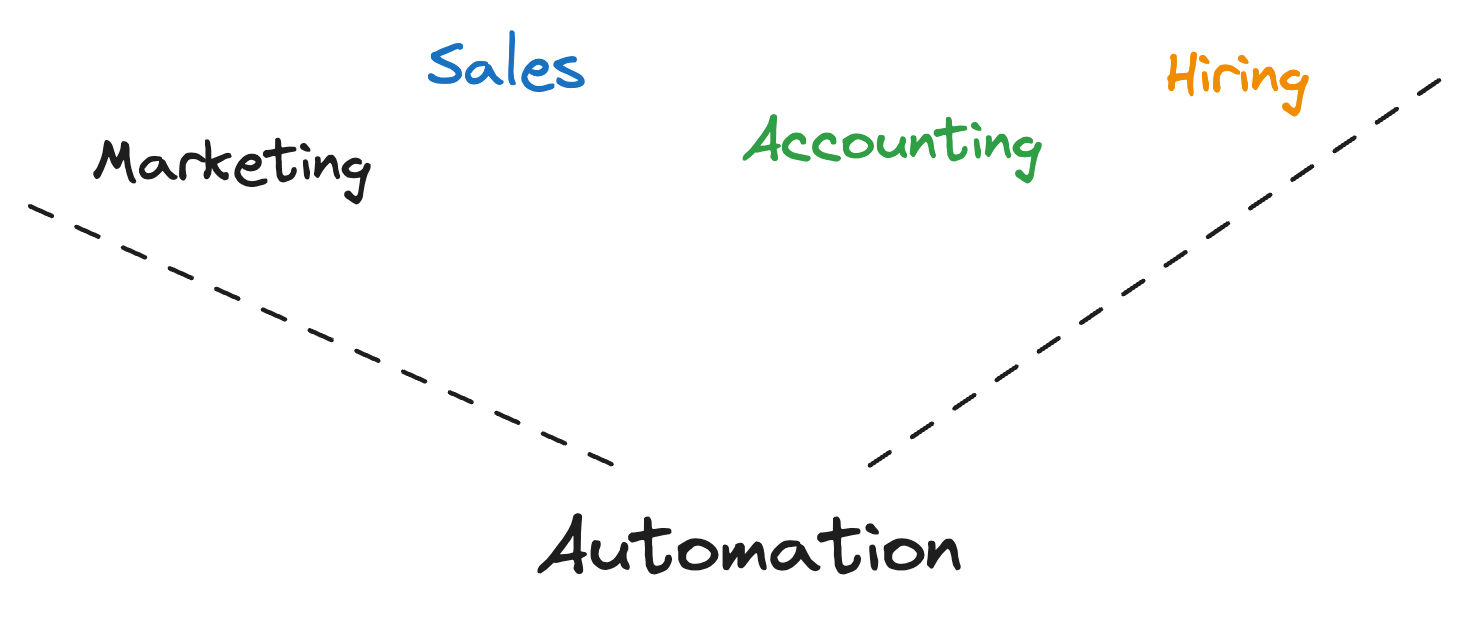· automation · 3 min read
Should you optimize your business processes yet?
Do you have processes that slow you down? Do you have manual data entry? Paper-based workflows? Manual inventory management? Sales and customer relationship management? Any process has the potential to be fully automated.

Most probably, you have such processes, so you should. Identify what slows you and your business down. Try to automate those restricting points. And now to the details.
Do you have processes that slow you down?
Do you have manual data entry? Paper-based workflows? Manual inventory management? Sales and customer relationship management? Any process has the potential to be fully automated.
Why care? Well, it saves you or your employees resources such as time and focus. We’re sure you know that, so the primary questions become:
- How to identify the most important processes to streamline first?
- How to automate effectively? I.e., how to spend as less resources into the process as possible?
Determining key processes for optimization
To decide which processes should be streamlined first, it’s imperative to analyze the overall flow of operations in your business. Here’s where process mapping comes into play - a technique that provides a visual representation of the entire process. It can make it easier to spot inefficiencies, bottlenecks, redundancies, or areas where error rates are high.
Start by mapping out your critical business operations, such as sales, production, customer service, etc. Once these processes are outlined, measure them. What is the time taken for each step? How many people are involved? How much does each stage cost? With this quantified data at your disposal, you’ll be better equipped to pinpoint where improvements can be made.
Prioritize those processes that, when improved, could result in the most significant impact on your business. Look for areas where time savings, cost reductions, quality improvements, or customer satisfaction boosts could be achieved. Remember, the goal is not just to make processes faster but also more effective, reliable, and scalable.
How to automate effectively?
So, you’ve identified the processes that need optimizing, but how do you go about automating them effectively? The key is to balance efficiency and effectiveness, bearing in mind the complexity and cost of implementing new technologies.
Start small: Implementing new technology all at once can be overwhelming, leading to resistance among staff, disruptions in services, and even total failure of the system. Instead, start with less complex processes that can be easily automated and will offer quick wins. This will not only build confidence within your team but also allow you to learn and improve as you go.
Collaborate: Automation is not merely about technology; it’s also about people and how they work. Involving your team in the process can help in understanding the practical aspects of the tasks and generate buy-in. This cooperation will likely result in better decision-making regarding what to automate and how.
Use the right tools: Not all automation tools are created equal. Some are ideal for simple, repetitive tasks, while others are better suited for complex process automation. Your choice should depend on your specific needs and the complexity of your processes. Remember, the most expensive solution is not always the best one.
Monitor and evaluate: Once you have automated a process, continuously monitor its performance. Is it providing the expected results? Are there any unexpected challenges? By regularly reviewing your automation efforts, you can tweak and refine the system for maximum benefit.
Remember to think about scalability. As your business grows, your processes will have to grow with them. Choose solutions that can be scaled up (or down) as necessary, and ensure that they are adaptable to changes in the business environment.
Optimizing and automizing your business processes is not a one-off activity but an ongoing effort. It requires careful analysis, planning, implementation, and monitoring. But with a strategic approach, the rewards can be substantial - increased efficiency, reduced costs, improved quality, and enhanced customer satisfaction. So, should you optimize your business processes? Of course!
